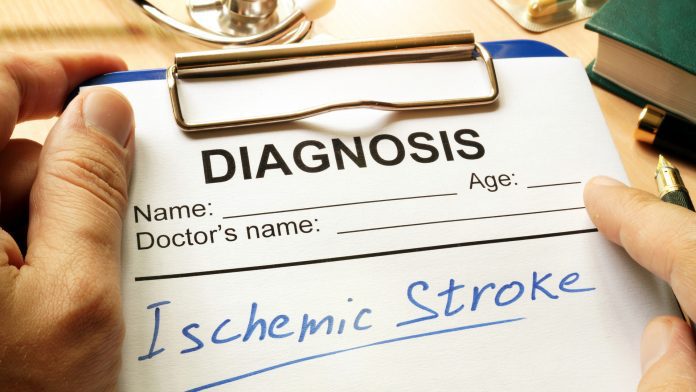
A novel investigation has revealed that women age 35 and younger are at an increased risk of suffering an ischemic stroke compared to men of the same age group.
A team of international researchers has analysed over a dozen studies investigating gender differences in stroke occurrence, identifying that females aged 35 and under were 44% more likely to have an ischemic stroke than their male counterparts. The team said their analysis may help to uncover causes of stroke in young adults.
The study’s findings are published in Stroke.
Stroke Editor-in-Chief Ralph L. Sacco, M.D., M.S., FAHA, said: “In this second annual Go Red Stroke issue, we have compiled some outstanding articles to inform our readers about multiple important clinical and translational science issues addressing gaps in our knowledge of stroke among women.
“Stroke affects more women each year than men. We want all stroke professionals to know about the latest research on the recognition, prevention and treatment of strokes among women.”
Compiling research
The research team employed the findings of 16 studies to conduct their ischemic stroke risk investigation. This equated to a combined total of 69,793 young adults with stroke – 33,775 women and 36,018 men – from over half a dozen countries, including the US, France, Canada, and the Netherlands.
The experts utilised the article “Systematic Review of Sex Differences in Ischemic Strokes Among Young Adults- Are Young Women Disproportionately at Risk?” (Leppert et al.) to examine variations in stroke occurrence among women and men across a range of young adult age groups. Additionally, the team used studies indexed on PubMed between January 2008 and July 2021. These included population-based studies on young adults aged 45 and younger.
Data from these studies included a plethora of stroke types, such as ischemic stroke, hemorrhagic strokes, transient ischemic attack (TIA), also known as a mini-stroke, and cryptogenic strokes, for which no known cause is identified. The strokes in the review were predominantly ischemic strokes, which accounted for 87% of all strokes.
Ischemic stroke gender differences
The subsequent analysis illuminated that cases of ischemic strokes were the highest among all stroke types and had the most significant difference in incidence frequency between women and men younger than 35 years. Women in this age group were 44% more likely than men to have an ischemic stroke. However, this sex difference became smaller in the 35 to 45 age group.
It was more difficult to distinguish sex differences in older age groups due to the vast variability in the way data was presented across the studies in this systemic review, meaning the researchers could not determine the causes behind the increased prevalence of ischemic stroke in young women compared to men.
Study limitations
The research team noted some limitations of their review due to variables in their data set, such as study populations spanning different continents, including 15 countries with varying levels of development, and a diverse range of people in the study from various ethnic and racial groups. Additionally, there were methodological differences across the studies and potential publication bias because larger epidemiology studies may not have reported results in the younger age groups because of the relatively small number of cases captured. The researchers explained that the incidence of ischemic stroke increases significantly with age, with only around 15% of all ischemic strokes occurring in adults younger than 50 years.
The researchers commented: “Traditional atherosclerotic risk factors are a major contributor to ischemic strokes in both young men and women and become increasingly important with age. However, these risk factors are less prevalent in younger women and may not account for the observed higher incidence of ischemic strokes in women younger than 35. Young women who are survivors of ischemic stroke also have worse outcomes, with two to three times higher risk of poorer functional outcomes compared to their male counterparts.”
To comprehensively understand the incidence of ischemic strokes in young adults and how non-traditional risk factors, such as pregnancy, postpartum and hormonal contraceptives, influence ischemic strokes in young women, the team believe more research is required.
Sharon N. Poisson, M.D., M.A.S., the co-author of the study and an associate professor of neurology at the University of Colorado, said: “Our finding suggests that strokes in young adults may be happening for different reasons than strokes in older adults. This emphasises the importance of doing more studies of stroke in younger age groups so that we can better understand what puts young women at a higher risk of stroke. Better understanding which young adults are at risk for stroke can help us to do a better job of preventing and treating strokes in young people.”







